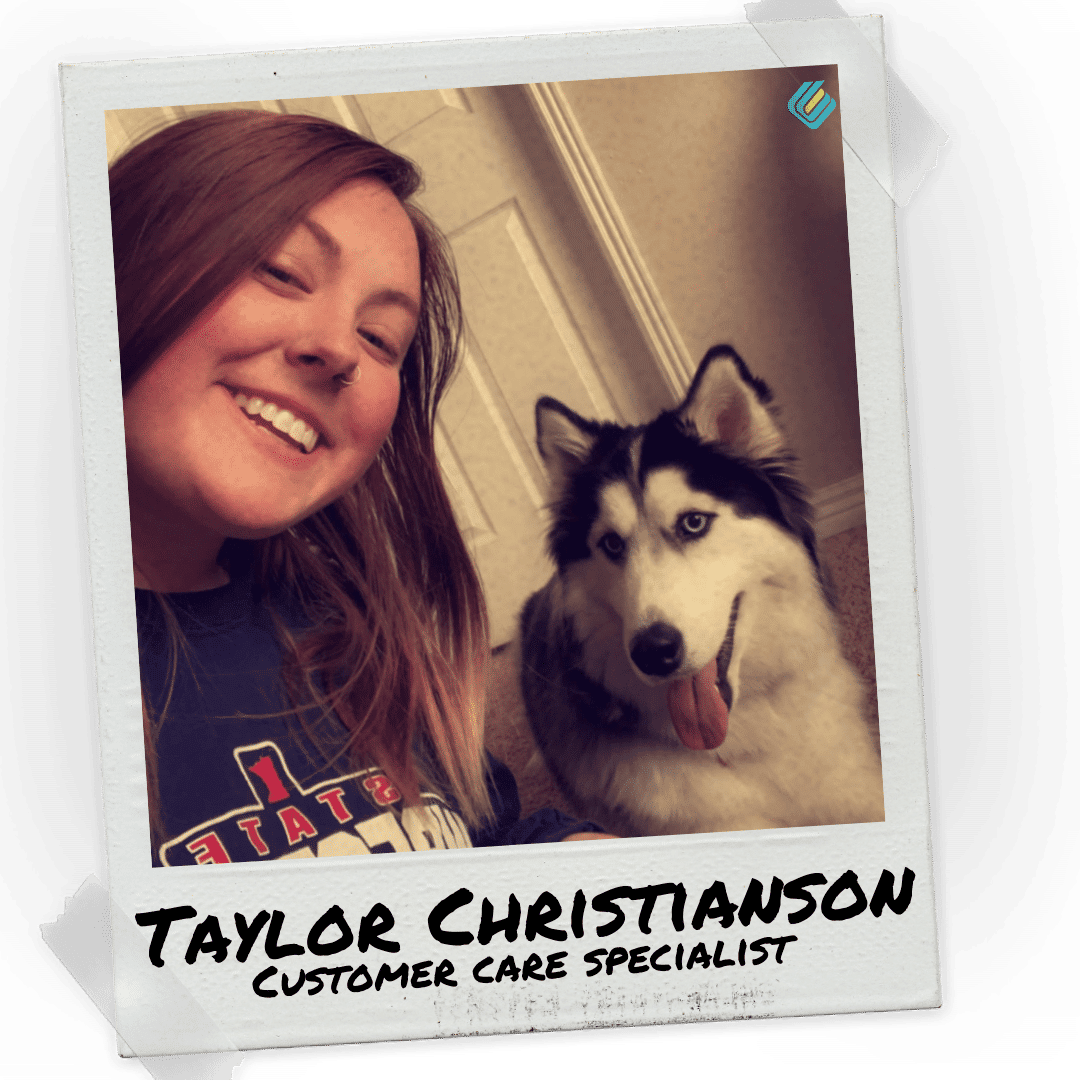
by California Casualty | Auto Insurance Info, Safety |
You’ve got the captain’s hat. You’re bringing the cooler. But what else do you need—or want—to have fun and stay safe on the water this summer?
There are literally hundreds of great boat accessories on the market, plus lots of safety gear to choose from. We’ve compiled a list of practical and fun items you’ll want to keep on your boat this summer. Scroll down for a list of what to leave at home, too.
First the fun…
A mounted grill – Treat everyone to a BBQ out on the open water. You can find boat grills in gas, charcoal, and electric. Just make sure to wait to grill until the boat has stopped, and don’t leave it unattended.
An inflatable boat slide – Everyone loves a boat slide! Choose one that inflates quickly, stores compactly, and holds adults as well as children. Durability is a plus.
Tow tubes – Give your passengers a ride on the waves using a tow tube. These fun accessories come in different shapes and sizes and accommodate a range of ages. Make sure you check the maximum weight and rider limit and equip all of your riders with life jackets.
Speakers – Crank up the tunes with some great speakers that are waterproof and can stand up to the elements, including wind, sun, and the motion of your boat.
Fish finder – Take the guesswork out of fishing. Today’s fish finders feature digital screens and include systems like GPS, electronic compasses, and radar. Starting at about $100, these instruments can go into the $1,000s.
Then the practical…
10-in-1 Boat Tool – This is the “Swiss Army Knife” of boat tools with every gadget imaginable. Not only does it include a fishing line cutter, a marine gas cap key, and a safety whistle, it includes a beer and wine bottle opener.
Telescopic boat hook – Until you have one, you don’t realize how useful these are! These hooks help you retrieve items that fall in the water. They also help you more easily get hold of the dock lines attached to pilings.
Underwater LED lights – If you take your boat out at night, an underwater light can help your boat be seen in the dark. These lights can come in different colors and add a cool ambiance.
Non-tipping can cooler – The rocking motion of your boat can easily tip your drinks. Secure them, and keep them cold, in a non-tipping can cooler.
Boat fenders – These cushions absorb the impact of bumps against docks and other boats.
And the necessities…
Don’t forget to pack a boat emergency kit full of the boat safety basics:
-
- Life jackets and throwable personal flotation devices in case someone goes overboard
- Fire extinguishers (check the regulations to see how many you need for the size of your boat)
- First aid kit, including motion sickness remedies
- VHF Radio for communications
- Signal flares (both visual and sound)
- Waterproof flashlight
- A way to get weather updates
- Basic tool kit for repairs and basic maintenance
Remember to leave these at home…
-
- Spray sunscreen which can leave a slippery film on deck
- Shoes with dark soles that leave marks
- Cigarettes/cigars that can accidentally cause a fire
- Perfume that attracts bees and can cause nausea in close quarters
- Glass containers that could shatter
- Plastic grocery bags that could fly off the boat and clog waterways
Finally, check your boat insurance. Make sure you’re fully protected from accidents, uninsured boaters, and liability claims.
Happy boating!
This article is furnished by California Casualty, providing auto and home insurance to educators, law enforcement officers, firefighters, and nurses. Get a quote at 1.866.704.8614 or www.calcas.com.

by California Casualty | Auto Insurance Info, Homeowners Insurance Info |
Do you want to save money on your insurance payments? Did you know there’s a way to do that without raising your deductible or lowering your coverage? The answer is bundling.
What is bundling? It’s a term to describe a multi-policy discount. If you have more than one policy with an insurance company, you may bundle those policies and, in the process, you can save on all.
Here’s why you might consider bundling:
-
- Bundling can save you money. Depending upon the amount of coverage for your policies, and your state, you can save from 5% to 25%.
- Bundling is convenient. It simplifies bill paying and record keeping since you interact with just one insurer.
- Bundling can help ensure you are fully covered. Having all policies with one company allows your insurance advisor to review any gaps in coverage.
There are many different ways to bundle your insurance.
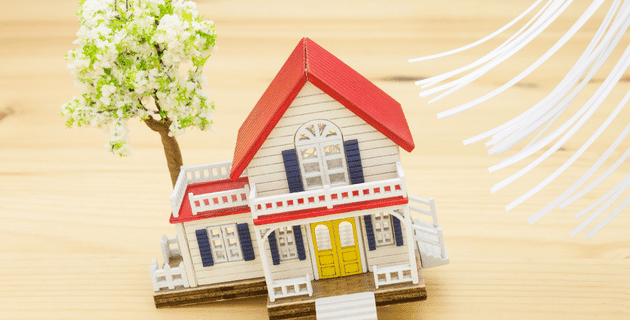
Homeowner’s Insurance Bundles
Your home is one of your greatest investments; you need to make sure that it’s fully protected. There are plenty of decisions to make when buying your own policy- from coverage limits to extra protection for your belongings. One of those decisions might be to incorporate additional coverage to enhance your policy. When you bundle those with your home insurance, you can save money.
You can choose to bundle your home insurance with:
- Sump pump endorsement: A sump pump is a device that collects excess water and drains it outside your home. Sump pump coverage covers the costs of repair and replacement in the event of a sump pump failure. Just a couple inches of water backup can cause thousands of dollars in damage – ruining carpets, destroying appliances, and crumbling drywall.
- Flood insurance: Regular home insurance does not cover flood damage. That’s why many people in flood zones purchase this extra policy. There is a 30-day waiting period to buy flood insurance, so take that into consideration.
- Auto insurance: If you have a vehicle, you likely have liability, collision, and/or comprehensive insurance. Liability coverage is used to pay for damages that you cause. Collision coverage helps to pay to repair your vehicle or get one of equivalent cash value if yours is totaled. Comprehensive coverage is for damage to your vehicle other than collisions, such as natural disasters, fires, vandalism, theft, and animals that damage your vehicle.
- College students and renter’s insurance: If your college student* lives away at school, his or her belongings are covered by your homeowner’s policy at 10% of the limit of liability or $1,000, whichever is greater. You may want more coverage than 10%. Talk to your insurance advisor about expanding limits, such as an umbrella policy to cover expensive items your student is bringing to college. Alternatively, consider purchasing renter’s insurance for your college student for an off-campus apartment. Renter’s insurance not only protects your student’s possessions but offers them emergency housing if they are unable to reside in the rental unit. Renter’s insurance is surprisingly affordable, so when you bundle it with your homeowner’s, it could practically be free!
*Note that college students must meet certain requirements in order to qualify as an insured on your homeowner’s policy. This includes age limitations, family relationship, and full-time enrollment in school. In the event of theft coverage, they must have lived in the location 60 days immediately before the loss.
- Earthquake Insurance: If you live in an area that is prone to earthquakes, you may want to consider this additional coverage. Homeowner, condo, and rental insurance policies typically do not cover earthquakes.
- Umbrella policies: This type of policy provides additional personal liability insurance that starts to pay after your underlying limits of liability on your home insurance policy have been exhausted after a covered loss. While there’s no way to know for sure how much liability coverage you may need, understanding what you stand to lose is a good place to start. If you’re being sued, it’s possible that equity in your home, your personal savings, and your income may be at risk. If the value of two years of your annual income, the equity in your home, and your savings exceed the liability limits on your auto or home insurance policies, then you should consider an umbrella policy to protect your net worth.
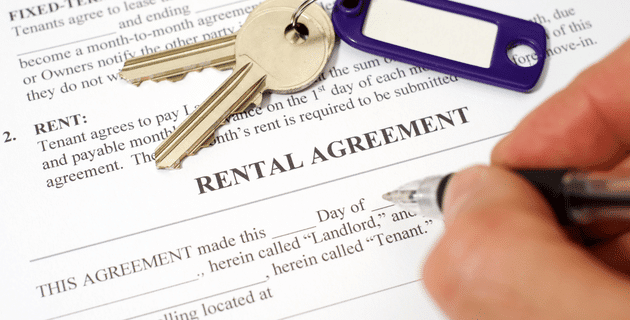
Renter’s Insurance Bundles
Renter’s insurance is like homeowner’s insurance but for tenants. Starting at about $10 a month, it protects your personal belongings (that’s right, your landlord’s insurance policy will not cover your belongings) but that’s not all. It’s an important safeguard if you’re found at fault for property damage or injuries at your place (and even around the world). It also can help if you don’t have access to your apartment or home due to a covered loss.
You can choose to bundle your renter’s insurance with:
- Auto insurance: As described above, auto insurance helps protect you in the event of an accident or other damage to your car. When you bundle your renter’s policy with an auto policy that you already have, the savings can be substantial.
- Pet insurance: Our pets are like family and we want to keep them as healthy as possible. Pet insurance can help to offset those veterinary expenses. Depending on your policy, pet insurance may cover exams, prescriptions, lab tests and x-rays, surgeries, emergency visits, and even cancer. You make the initial payment and then are reimbursed depending upon the deductible and limits that you have selected. (Pet insurance also may be bundled with homeowner’s, too.)
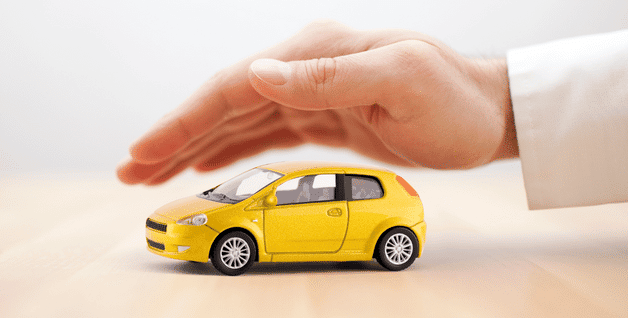
Auto Insurance Bundles
Auto and homeowner’s insurance, and auto and renter’s policies, are among the most popular types of insurance bundles. However, you also may wish to bundle your car insurance with a boat policy.
- Boats and personal watercraft: If you have a boat, you will need a boat insurance policy. You also need a separate policy for personal watercraft such as jet skis. The policies protect you from vandalism, accidents, and liability for injuries to others.
*Note that motorcycle insurance is not eligible for a bundling discount. However, if you live in a cold climate state, and only ride your bike in warmer months, you can ask about seasonal coverage.
Each year, California Casualty policyholders save an average of $423* a year. That could be even more if you decide to bundle your coverages. See how much you can save and get started with a free quote today at mycalcas.com/quote.
This article is furnished by California Casualty, providing auto and home insurance to educators, law enforcement officers, firefighters, and nurses. Get a quote at 1.866.704.8614 or www.calcas.com.

by California Casualty | Auto Insurance Info, Travel |
With its beautiful beaches, rich culture, and delicious cuisine, Mexico is a popular travel destination. Plus, it’s one that can be reached by car for many Americans. If you’re planning a family road trip to Mexico or heading there for some much-needed rest and relaxation, you’ll want to do your research. Here are some tips to get you started.
Apply for Mexico Auto Insurance.
Mexico does not recognize U.S. auto insurance. If you’re driving to Mexico from the U.S. in your own car or a rental, you will need to purchase a tourist auto policy.
-
- A Mexico auto policy will allow you to cover damages if you’re involved in an accident.
- If you cannot show proof of Mexican insurance, you can be heavily fined and even arrested. This is true even if you are not at fault for the accident.
- You can get coverage for the duration of your trip: a few days, a few months, or longer.
- You can purchase this coverage from your U.S. insurer.
If driving your own car, apply for a vehicle permit.
Mexico requires temporary import permits, which essentially is registering your car in the country. The government agency that issues permits is called Banjercito. You will be asked to leave a monetary deposit that will be returned to you when you return home.
-
- You may purchase this temporary import permit at the border.
- You also may find it online. (Click the Ingles/English version to see the page in English.)
Avoid rental car scams.
It’s common for car rental places in Mexico to quote very low prices but to have hidden rental fees. When you show up to get your car, you discover that you have to pay crazy high fees.
-
- Be wary of low car rental fees and make sure to read the fine print.
- Make sure you set up rental car insurance.
- Discover Cars is a reputable website that helps you find the best rental prices.
Make sure you carry valid identification.
U.S. citizens must present a valid U.S. passport (book or card) and an entry permit which you will receive at immigration when you cross into Mexico. If you are driving a car, you also need a driver’s license.
-
- A U.S. driver’s license works in Mexico, but if you have time, you may apply for an international driver’s permit. It sometimes takes about 6 months to receive one, but it will translate your license into Spanish.
- When the immigration officer hands your stamped passport back to you at customs, it will include a tear-off FMM form. Hold onto this form and keep it with you. It is important documentation and you will need to show it when you leave the country. Otherwise, you will have to pay a fine.
Understand Mexican road markings and signage.
You’ll want to brush up on your Spanish for your Mexico road trip. That’s the language for the road signs. The signage also may look a little bit different than what you’re used to, so familiarize yourself with it before you go. Also, Mexico uses the metric system, so you may want to reacquaint yourself with it.
-
- Remember that both distance and speed limits are in kilometers. If you’re driving your U.S. car, it should have a reading for kilometers. If you’re driving a rental car from Mexico, kilometers should be displayed automatically.
- Keep a copy of Mexican road signs with English translations with you in the car.
- Stop lights are horizontal rather than vertical.
Know Mexico’s road system.
While you may expect traveling in Mexico to be a bit different than the U.S., you may be surprised at some basic differences. There are Facebook groups where you can talk to former U.S. citizens living in Mexico – ex-pats – and ask specific questions about your proposed route.
-
- There may not be gas stations in rural areas. You can ask around, as sometimes gas is sold in convenience stores.
- You have to pay to travel the highways and they can be surprisingly expensive. They only take cash, not credit cards.
- On the free roads, look out for speed bumps that may or may not be marked. These are known as topes and can cause damage to your car if you hit them too fast.
- If you’re traveling between states in Mexico, there are military-style checkpoints where you will have to stop and let them search your car.
Ride the bus.
Mexico has a bus system with different classes of service, and many U.S. visitors enjoy its higher classes—which are comparable to business class airline service.
-
- Executive and first-class bus travel come with comfortable seats, air conditioning, and onboard restrooms. These routes are efficient and operate on time with few stops.
- Some bus stations include lounges for executive travelers.
- Toilets at bus stations come with a charge of between $3-$5 for entry, so be prepared.
- Mexico also offers shared minibusses and vans known as colectivos (and other names). While you can save money using these, they may be cramped, without air conditioning and they have been known to break down—so use these with caution.
Know where you want to go.
Mexico has 758,00 square miles (or 2 million square kilometers) to explore. This includes beaches, mountains, cities, canyons, jungles, and more—plus plenty of distinctive food, culture, architecture, and activities. Plan out where you are going to go so that you can get the most out of your trip, and do it safely.
-
- In some parts of Mexico, there are caverns with underground water where you can swim. These swimming holes are called cenotes.
- Beaches in certain regions of Mexico have a seaweed problem known as sargassum. This starts in late spring and continues to the fall, so check to see whether this affects where you will be visiting.
- Most of Mexico’s museums are closed on Mondays so plan your trip accordingly.
Be an informed traveler.
Travel helps to broaden your horizons with exposure to different cultures and experiences. Do your research on your destination so that you will not only understand the local perspective but you can enjoy it.
-
- Know that time is relative in Mexico. Do not assume that everything is going to start on time. In most cases, it probably won’t. Plan for this when making your itinerary.
- There is no free Wi-Fi in Mexico’s cafes and restaurants.
- The Spanish word for women is “mujeres,” which means that bathrooms labeled with the letter “M” are for women. (This is especially confusing to American travelers!)
- Don’t drink the tap water in Mexico. It’s not safe. To avoid paying lots of money for bottled water, consider bringing a reusable water bottle with a disposable filter.
- Cash is king in Mexico, so where possible, pay with pesos. When paying with a credit card, many merchants will add a tip before running the card, so be aware. (You can actually tell them the tip you want to add before running the card.)
- When withdrawing money, look for ATMs that are located inside banks. If you have a problem with a street ATM, it may be hard to locate the owner.
Pay attention to State Department travel warnings.
Whenever you are traveling out of the country, it is good to check the U.S. State Department’s website for any travel warnings for your destination. These will include any security or health risk warnings, including updates on COVID-19.
-
- Sign up for the Smart Traveler Enrollment Program, a free service that gives you the latest updates when you’re traveling out of the country.
- The State Department will tell you if there are regions to avoid and precautions to take on your travels. Follow their recommendations.
- A vacation could turn into an expensive COVID-19 quarantine if you unexpectedly have to cover the costs of additional days in Mexico, so plan accordingly.
Safe travels.
This article is furnished by California Casualty, providing auto and home insurance to educators, law enforcement officers, firefighters, and nurses. Get a quote at 1.866.704.8614 or www.calcas.com.

by California Casualty | Auto Insurance Info, Homeowners Insurance Info, Safety |
Summertime was made for fun-from beach vacations to family barbecues, road trips, and dips in the pool. But unfortunately, sometimes during all that fun, there’s a mishap or two….
Make sure that your home and property are fully protected in case anything happens. Use this guide as a reference on how to insure yourself and your family for summer fun.
Swimming Pools
Your swimming pool is probably covered under your homeowner’s policy. That being said, you’ll want to make sure that you have enough to cover the following situations.
If someone is hurt or drowns in your pool, you are responsible. It doesn’t matter whether or not you gave them permission to swim. Your personal liability coverage is designed to cover these instances. Typical homeowner’s policies carry $100,000 of liability protection. If you have a swimming pool, you need considerably more. Experts suggest either increasing your personal liability (with the maximum being $500,000 or $1,000,000 depending upon the state) or adding a personal umbrella policy. Umbrella policies start at $1,000,000 in coverage. In addition, take steps to prevent these tragedies by securing your pool with a fence and self-latching gates. Make sure children never swim unattended. Install alarms that alert you if someone is entering the water.
Pro Tip: Make sure your pool meets the local municipal code. We’ve seen some insurance companies refuse to pay if the pool is not up to code.
- Tree falls into your pool
Summer storms can be intense, and could cause your tree to fall on your house or into your in-ground pool. If a tree falls into your pool, your homeowner’s insurance could cover a reasonable expense to remove it if it was felled by a covered peril and if it struck a covered structure (like your pool) and damaged it. No more than $500 will be paid for any one tree and no more than $1,000 total for any one claim.
Trampolines and Swing Sets
Trampolines and swing sets are considered attractive nuisances, places on your property that can attract children but also put them in danger. (Swimming pools are, too.) You will need to safeguard them, such as by making sure they are in a fenced area.
Trampoline injuries or deaths are covered under your personal liability insurance as part of your homeowner’s policy. Check with your insurance agent to see if you have enough coverage for a trampoline accident. Also, check to see whether there are any individual limits to that coverage. Protect against these accidents by installing an enclosure to secure the trampoline so there are no unsupervised guests. Always supervise children while they are using the trampoline and enforce the rule that only one person uses it at a time.
Swing set accidents also are covered by personal liability. Make sure your homeowner’s policy has adequate coverage. Supervise children whenever they are using the swing set. Inspect your set regularly and cover sharp corners or protruding nails that could cause injury. Check that there is a minimum of 22 inches between swings and that the slide is no longer than 10 feet. Also, make sure there’s at least 10 feet of clearance around the swing set.
Dog Bites
Dogs spend time outside with us in the summer. Sometimes that can lead to circumstances where dogs can bite. If your dog bites a third party, you are responsible. Liability coverage protects you in this instance. It pays for the bite victim’s medical expenses and covers your legal fees if they sue you.
-
- Make sure that your dog’s breed is not restricted by your insurance policy. Some policies will not cover breeds such as Pit Bulls, Doberman Pinschers, or Rottweilers. California Casualty does not currently have such restrictions.
-
- If your dog is a victim of a bite, pet insurance can help cover that emergency vet visit. You also may be able to be reimbursed by the other dog owner’s liability coverage.
BBQ Grill Fires
Backyard barbecues are a favorite summertime activity. We may not think about them being dangerous, but they can be. Practice summertime fire safety. Keep your grill away from the house and any other structures. Store your charcoal or propane safely and away from the heat. Keep a fire extinguisher handy. Always supervise young children when around a grill.
-
- If a grill fire spreads to your home or property, and causes costly damage, your homeowner’s policy will likely cover repairs, minus the deductible.
-
- If a guest is injured by a fire on your property, and you are legally responsible for that bodily injury, your liability insurance will cover that person’s medical expenses. If you are not liable, but your guest was injured through his/her own fault, then Coverage F – Medical Payment to Others may cover your guest’s medical bills.
Boats and Personal Water Craft
Small boats like kayaks and canoes may be covered under your homeowner’s policy as personal property. If you have a boat, you will need a separate boat insurance policy. You also need one for personal watercraft such as jet skis.
- Boats – The costs of insurance will vary depending on the value of your boat and where you keep it. For a California Casualty property contract, the policy will cover up to $1,500 for boats and a trailer for 16 named perils but not for theft away from the residence.
- If you’re transporting your boat on a car trailer, your auto insurance will likely cover any accidents.
o If you are at fault for a car accident, your auto liability will extend coverage but there will be no physical damage coverage for the boat or trailer.
- If you want physical damage coverage for the trailer, it needs to be added to the auto policy. If you want physical damage coverage for the boat, it needs to be included on the boat policy.
- If your boat is parked at your house and is damaged, your homeowner’s insurance may cover it. Otherwise, your boat policy will cover accidents on the water.
- Personal Watercraft – Your jet ski or other personal watercraft will need its own policy to protect you from vandalism, accidents, and liability for injuries to people riding your personal watercraft. This type of policy is available through the Agency Services division of California Casualty.
Rental Car Accidents
If you’re heading on vacation this summer, you might be driving a rental car. Your own auto insurance may cover a rental car, minus your deductible, or the credit card that you used to book the car may come with insurance. If not, you will want to make sure that you are covered by purchasing rental insurance through the rental car company. Here’s what you will need to think about.
- Collision Damage or Loss Damage Waiver – Optional in many states, this type of coverage pays for the rental car if it is damaged or stolen. There usually is a deductible, for which you’re responsible. If your auto policy covers collision damage, make sure that it also covers “loss of use.” For a rental company, getting a car repaired in the shop means it loses the income it could be getting from renting the car. The rental company can charge you the daily rental rate for each day the vehicle is out of service.
- Personal Accident Insurance – This optional policy covers you, the driver, in the event of an accident, including ambulance transportation and medical bills.
- Supplemental/Additional Liability Insurance – This optional policy covers the other driver and passengers whom you may injure in an accident. It also covers any property damage. You likely have liability on your own auto policy. Check to make sure the liability limit is enough. You can purchase supplemental liability insurance with the rental car company or get an umbrella policy from your current insurer.
- Personal Effects Coverage – This optional policy covers your possessions if they are damaged, lost, or stolen, something your homeowner or renter’s policy may already cover.
Have a great, fun-filled summer!
This article is furnished by California Casualty, providing auto and home insurance to educators, law enforcement officers, firefighters, and nurses. Get a quote at 1.866.704.8614 or www.calcas.com.
by California Casualty | Auto Insurance Info, News |
We have amazing employees at California Casualty. The New Employee Spotlight is a series aiming to highlight the talented individuals that are brand new to our team. Please help us give them a warm welcome!
Today we’re spotlighting Customer Care Specialist, Taylor Christianson
Let’s get to know, Taylor!
Where are you from?
Minnesota, but I work in the Colorado Springs office.
What is one interesting fact you want us to know about you?
I’m a golfer 🙂
If you could eat one food for the rest of your life, what would it be?
Pizza!
What do you like to do on the weekends?
Hiking with my husky
EDM concerts/ bass music
Epoxy resin art
What made you want to start your new career with California Casualty?
New opportunities!
If you want to learn more about Taylor or are interested in a career at California Casualty, connect with her on LinkedIn! Or visit our careers page at https://www.calcas.com/careers
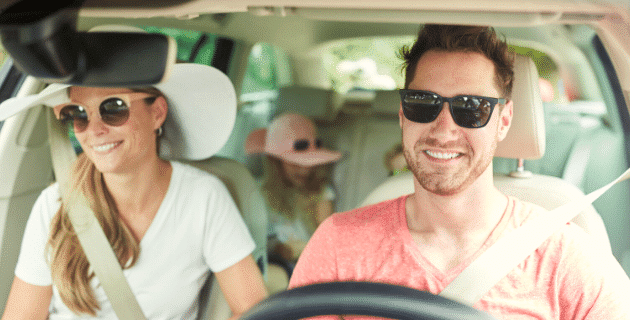
by California Casualty | Auto Insurance Info |
If you’ve ever been in a car for hours on end, you know the challenges of long-distance driving. It can be uncomfortable, boring, and if you’re tired, even dangerous. Here’s how to stay safe and comfortable during your next long distance road trip.
Plan your route.
Even if you’re using a GPS, you will want to take a look at a map to know where you are going. That allows you to plan your trip, including where to stop to ensure that you’re not driving too long without a break.
-
- Try to take a 15-minute break for every 2 hours of driving.
- Plan your rest stops, not only for mealtimes, but also consider interesting places to visit to break up the trip.
- Account for peak travel times. You may make less progress during rush hours, so consider getting off the road during that time.
Prepare your vehicle.
There’s nothing worse than breaking down on the road for something that could have been prevented with regular maintenance. Before your trip, take a good look at your car, and have it serviced at your local mechanic to make sure it’s in good condition for the trip.
-
- Check fluid levels (brake, coolant, engine oil), tire pressure, and tread depth.
- Make sure that your windshield wipers are in good condition and your lights are working.
- Pack an emergency kit for your car, just in case. This should include safety flares, a flashlight and extra batteries, and a first aid kit.
- Clean and vacuum your car. Sitting in a clutter-free car makes the trip so much nicer.
- Childproof your car before the trip. Make sure it’s safe for your youngest passengers.
Make sure you’re well-rested.
Driving when you’re tired can lead to poor decisions and reduced reaction time which can cause accidents. A study by the AAA Foundation for Traffic Safety estimates that 328,000 crashes each year are caused by drowsy driving. Researchers believe there may be even more than reported. Don’t put yourself or your family at risk.
-
- Get enough sleep the night before your trip, and if possible, the night before that as well.
- Don’t drive when you’re already tired. Avoid planning long drives after work.
- If you feel tired, pull off the road. You can even take a short nap in your car in a safe place, such as a rest stop.
- You can also try short-term pick-me-ups, such as caffeine. Chewing gum can work to keep you awake. Or try an energizing scent. The scent of peppermint can help make you temporarily more alert.
Stay hydrated.
You may be reluctant to drink a lot on your trip, for fear of having to stop more often to go to the bathroom. However, it’s important to stay hydrated. Dehydration can make you feel more tired and cause blurry vision.
-
- Avoid sugary drinks which can cause dehydration.
- Avoid coffee or tea, except as the occasional pick-me-up. They also can dehydrate you.
- Drink water. Pack a cooler and keep it nice and cold so it will feel refreshing.
- You can add citrus or berries to your water for some healthy flavor.
Prepare and plan food and snacks.
Mealtime and snacks are some of the fun of long-distance road trips. Whether you check out a new restaurant or munch on some home-brought favorites, food can be a highlight. Plan for your meals and snacks ahead of time so that you’re not searching for food when you’re hungry, and so that you make the most of your travel time.
-
- Pack sandwiches, put them in a cooler, and then stop for a picnic lunch at a rest stop or park.
- If you have family along the route, stop for a visit around mealtime. You’ll enjoy some homemade food and family time as a bonus.
- Research restaurants along your route. You might find some local fare that you otherwise wouldn’t have a chance to try.
- Choose healthy snacks that keep you full and that aren’t overly messy for the car. These include mixed nuts, trail mix, jerky, granola bars, crackers, carrots, celery, and fresh fruit.
- Bring wipes and designate a trash bag. If you need the floor space for luggage or legs, try a trash container that hangs on the back of the seat.
Stock your car with entertainment.
Long car rides can be boring, and not only for children. Planning things to do can help make the time pass more quickly. If you’re not the one driving, you may even be able to use the downtime productively.
-
- Make a playlist of your favorite songs. Take requests from your (future) passengers and you’ll have everyone engaged.
- Listen to an audiobook or podcast. You can borrow one from your local library or use a favorite streaming service.
- Keep the children occupied with books, puzzles, Mad Libs, Rubberneckers or car games that you can play without any materials, such as I Spy or “find the license plate.”
- Complete a mini-project if you’re not driving, such as organizing your Smartphone screen, deleting photos and emails, brainstorming goals, or practicing a new language.
Finally, make sure you have the proper car insurance. Coverage will give you peace of mind should anything happen on your long distance road trip.
Safe travels.
This article is furnished by California Casualty, providing auto and home insurance to educators, law enforcement officers, firefighters, and nurses. Get a quote at 1.866.704.8614 or www.calcas.com.








